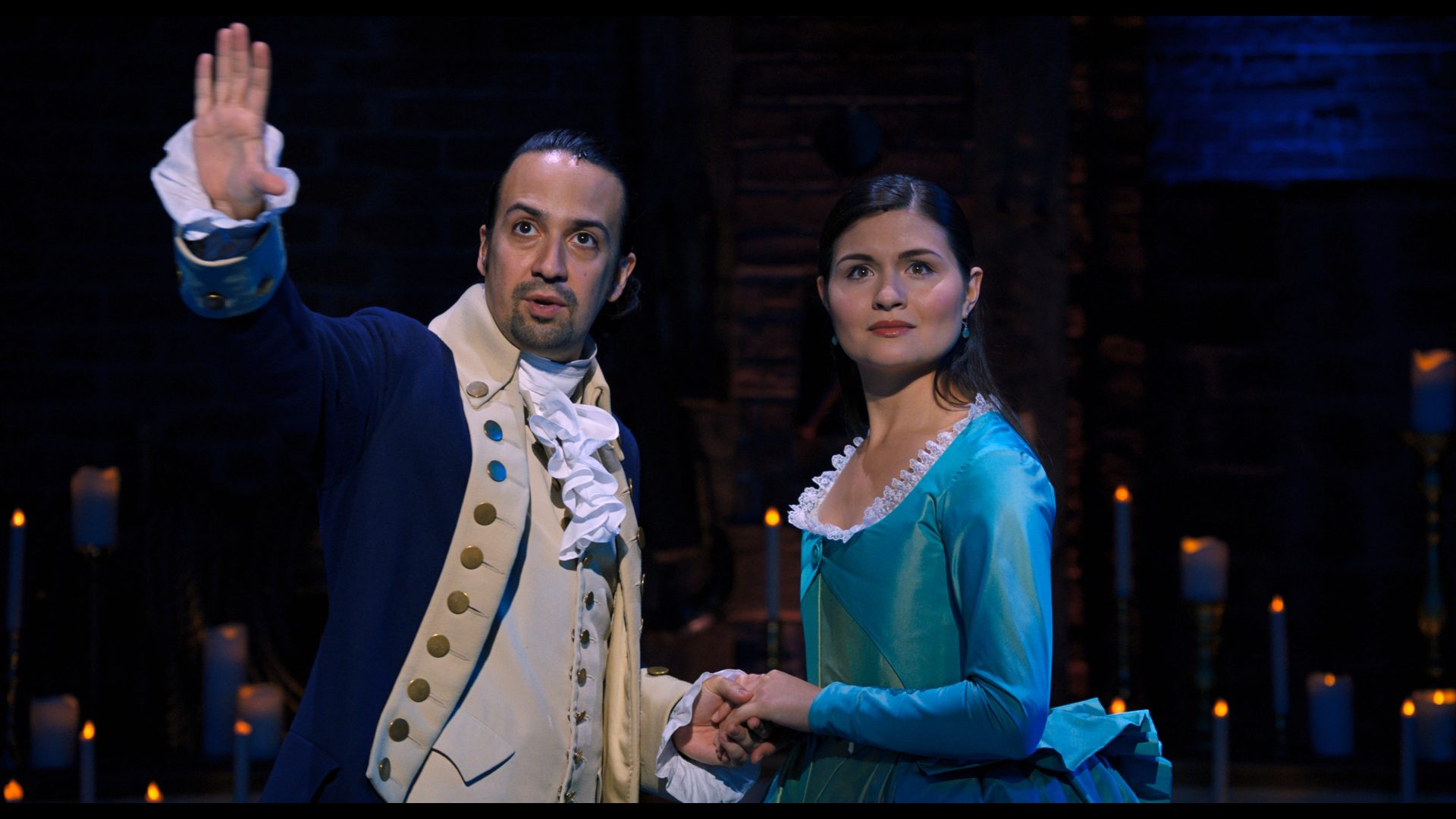Along with millions of other Americans, I watched Lin-Manuel Miranda’s Hamilton over the July 4 weekend when the Broadway musical celebrating one of America’s founding fathers first became available for streaming on Disney Plus. I was in awe at seeing Chernow’s incredible biography of Alexander Hamilton transformed into a play with history-packed lyrics set to multiple genres of music (rap, hip hop, rock, and pop).
Hamilton is a patriotic film. For some, patriotism leads to a troubling conflation of God and country, an unwillingness to criticize our country’s decisions or leaders (at least, the leaders of the party we belong to), and a revisionist history that whitewashes the past in order to maintain an inspiring mythology of the founding. For others, patriotism itself is problematic because it appears to tolerate (or at least downplay) racism, sexism, or any of the other hypocrisies and injustices present in the American story.
Hamilton is patriotic in the best sense. It doesn’t belong to the patriotic stream that minimizes or ignores injustice. But neither does it work for those whose clear-eyed vision of previous generations’ sinfulness would prevent them from seeing goodness in the founding worth celebrating. It belongs to the Frederick Douglass and MLK stream of patriotism, whereby the ideals of the founders are not to be thrown away due to their manifest hypocrisies, but become instead the standard by which we judge the founders.
Hamilton and Its Critics
The kind of patriot who would minimize the problems in America’s founding won’t like parts of Hamilton, such as the unflattering portrayal of Jefferson. But neither will the revolutionary bent on tearing down statues and monuments. And it’s the latter ethos that is on the ascent today. These are the critics who have come after Hamilton. A play that five years ago felt progressive to many seems “problematic” today.
Hamilton is a problem, we are told, because it doesn’t adequately portray the evils of slavery. It doesn’t center the slaves and their plight. The Revolutionary War appears to “raise a glass to freedom,” when some of today’s historians make the case that that even the war for independence was primarily about preserving slavery. Even though Hamilton points out the hypocrisies and double standards in our founders, it doesn’t do so enough for some critics. And so, a patriotic film that inspires by appealing to the ideals evident in our nation’s founding without ignoring their complicity with evil is seen as too optimistic and cheery a vision of America.
“It’s All Fair Game”
Lin-Manuel Miranda’s response has been non-defensive: “The sheer tonnage of complexities and failings of these people I couldn’t get… Did my best. It’s all fair game.” In other words, Evaluate the show. He doesn’t apologize for the art he created; neither does he defend it as above critique.
Art speaks. In this, Miranda has done something much harder than his critics have done: he has created something of beauty. He doesn’t have to be defensive about his art; neither does he have to grovel for the applause of his critics. The artist will have more lasting influence than his critics will.
Place for Criticism
Social media has made it easier than ever to criticize. Over many platforms lingers the polluted air of cynicism, a “we know better” attitude that sneers at anyone too earnest and unabashed in pursuing beauty and inspiration in their art.
This is not to say that critics are unimportant, or that all criticisms are invalid. We all have the freedom to assess a work of art, to judge it by its merits and failings. Critics have their place. Sometimes they’re right. (We cringe at the self-referential moment of a critic getting his comeuppance in M. Night Shyamalan’s Lady in the Water.)
What’s more, not all criticism is about picking something apart. Some of what is called “criticism” is more about thoughtful interpretation, drawing out depths of meaning that enhances rather than detracts from the creator’s work. This type of criticism might actually be considered a form of creation in itself—criticism that constructs rather than deconstructs, and builds rather than tears down.
Perhaps that’s why the best critics tend to be creators also—writers like Mark Twain, or G. K. Chesterton. Chesterton’s critical books on Charles Dickens and George Bernard Shaw are either almost as enjoyable (Dickens) or more enjoyable (Shaw) than the artists he wrote about.
And that brings me to my main point: creating something of beauty has a larger effect than critiquing a work of art. Creating beats critiquing, which is why the best critics are usually the ones who also know how to create.
Creation Over Criticism
It’s easier to criticize than to create.
It’s easier to critique the atmosphere or culture of your workplace than it is to create a better one.
It’s easier to criticize the sermon than to deliver one yourself.
It’s easier to critique a book than to write one, to judge an album than to record one, and to scoff at a film than to make one.
That’s why we must remind ourselves: the creator’s influence usually outlasts the critic’s. If you’re a preacher, you know that one criticism of your sermon feels magnified 10x in your mind, but it’s likely that your sermon’s effect on your congregation is 10x greater than the one criticism you received. If you’re a writer, the one-star Amazon review may deflate your spirit, but it’s likely that many more people will read your book than will come across a critical review.
To ignore your critics is to miss the opportunity to get better. But to overestimate their importance will stifle you as you write, speak, or create something of beauty. So, by all means, receive criticism. But don’t let that sap you of your energy to create. Creating beats criticizing. So let’s make something beautiful, for the good of the world and the glory of God.
